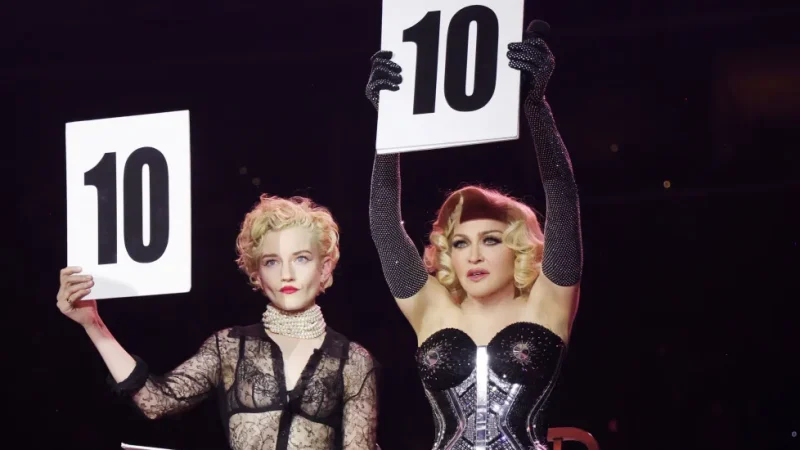Bernie Goetz: The “Subway Vigilante” and the Complex Legacy of His Actions

The subway system, once a symbol of public connectivity, had become notorious for being a breeding ground for violence, drug use, and harassment. Against this backdrop, Bernard Goetz, a man of modest means, became an unlikely hero in some eyes and a criminal in others. His actions on a subway train on December 22, 1984, would forever change his life and place him at the center of a national debate on vigilantism, self-defense, and the societal implications of crime.
This article delves into the life, actions, and the complex legacy of Bernie Goetz, the so-called “Subway Vigilante,” whose moment of violence on a New York City subway train remains a polarizing subject even decades later.
Early Life and Background
Bernard Goetz was born on November 7, 1947, in the Queens neighborhood of New York City. He was raised in a middle-class family and later attended the University of Connecticut, where he studied electrical engineering. Goetz’s life before the infamous subway shooting was relatively ordinary; he worked as a technician in various fields, though his professional life was often marked by frustration. Despite his average upbringing, Goetz’s life would take a drastic turn, leading to his association with a shooting incident that would define his life and the public perception of him.
Goetz’s personal life and psyche are key to understanding the events that unfolded later. While outwardly unremarkable, Goetz had a history of mental health struggles and an enduring sense of paranoia. Over time, he had grown increasingly disillusioned with the state of New York City, particularly its urban decay and the perceived inability of the city’s authorities to provide safety to its citizens. This growing sense of powerlessness was amplified by his repeated encounters with crime in the city, where he felt increasingly vulnerable. It was under these conditions that he would ultimately take matters into his own hands.
The Subway Incident: December 22, 1984
On the evening of December 22, 1984, Goetz boarded a Manhattan-bound subway train. He was carrying a small caliber pistol that he legally owned, a tool he would use to defend himself. That night, four young Black men—Tyrone S. D. S. Yates, James R. Ramseur, Darrell S. Waters, and Robert E. Brown—boarded the same train. They were allegedly attempting to rob Goetz, according to later testimonies and police reports. At the time, Goetz was 37 years old, a man who had reportedly been mugged twice before and had grown increasingly fearful of being victimized once again.
As the train moved through the tunnels of Manhattan, a confrontation occurred. According to Goetz, one of the young men approached him and demanded money, while the others stood nearby. Goetz, who later claimed that he feared for his life, pulled out his gun and shot all four men. The first shot struck one of the men in the chest, and Goetz fired three more shots, hitting the others. He then fled the scene, leaving behind the wounded men.
Two of the men sustained severe injuries, but none died from the shooting. The incident quickly garnered massive media attention, sparking debates about self-defense, vigilantism, and race relations in America.
Goetz’s Initial Legal Trouble and the Public’s Response
At first, Goetz went into hiding, but he was eventually apprehended by the police. His arrest and the subsequent trial would become one of the most highly publicized legal cases in New York City history. In 1984, the case not only highlighted the broader issues of crime in New York but also brought to light the growing sentiment of frustration among city residents who felt unsafe. Goetz, who had been arrested before for minor offenses, became an icon of sorts for many who saw him as a hero fighting back against a criminal system that had failed to protect the innocent.
At the same time, others viewed Goetz’s actions as excessive and dangerous. Critics were quick to point out the racial element of the incident. All four men involved were Black, and Goetz’s critics accused him of racial profiling and using his gun out of prejudice. The media coverage often polarized the public, with some newspapers dubbing Goetz the “Subway Vigilante” and others calling him a “murderous gunman.”
The police charged Goetz with attempted murder, assault, and reckless endangerment. During the trial, Goetz’s defense team argued that he was acting in self-defense, fearing for his life in a dangerous environment. Goetz testified that he was forced to act preemptively when one of the young men approached him with a request for money, which he interpreted as a threat.
The prosecution, however, argued that Goetz had acted out of anger and had taken matters into his own hands in an unlawful way. His actions went beyond self-defense, as the victims were already retreating when he fired the final shot.
Legal Outcome: The Trial and Verdict
In 1987, after a highly publicized trial, Goetz was convicted of illegal possession of a weapon, but the jury acquitted him of the more serious charges of attempted murder and assault. The verdict was met with mixed reactions. Goetz’s supporters viewed the decision as a victory for citizens who felt powerless in the face of rising crime, while his detractors argued that the trial’s outcome sent a dangerous message, condoning vigilante violence.
Despite the acquittal, the trial left a lasting stain on Goetz’s life. Although he had not been convicted of the most serious charges, he remained a controversial figure, with some still viewing him as a hero and others seeing him as a man who had taken justice into his own hands in a reckless and dangerous manner.
The Aftermath: A Divided Nation
The Goetz case was a defining moment in New York City’s history, coming at a time when crime was at a peak. The city’s streets and subways were seen as dangerous, and many residents were losing faith in the police and government institutions. The Goetz incident sparked a broader conversation about crime, race, and justice, one that would resonate for years to come.
For many New Yorkers, Goetz represented a symbol of frustration. His act of violence was seen by some as a necessary response to an out-of-control city, where citizens had no means of defending themselves against criminals. For others, particularly within the African American community, Goetz’s actions represented a deeper, more troubling societal issue—one that had to do with race, class, and the willingness to use violence to solve social problems.
The Goetz case also led to wider discussions about gun ownership and self-defense laws. In an era where crime was often portrayed as an epidemic, many felt that Goetz’s actions were a direct response to a larger social failure. Others believed that it was important to maintain the rule of law and resist the temptation of vigilante justice.
Bernie Goetz’s Life After the Incident
After the trial, Bernie Goetz faded from the public eye. He remained in New York City for several years, but his life was never the same. The constant media attention, the public debates, and the legal battles had taken a toll on him. In the years following the trial, Goetz lived a relatively reclusive life, occasionally making headlines for minor offenses and public disturbances.
He has also become a part of New York City’s complicated history. While some view him as a tragic figure who had become a victim of a broken system, others regard him as a man who perpetuated the violence he feared. His actions sparked significant changes in the way that New Yorkers viewed crime and self-defense, and they remain a key chapter in the story of the city’s evolution through the latter half of the 20th century.
Legacy and Continuing Debate
Bernie Goetz’s story is far from over, as his legacy continues to be a point of contention. In some circles, Goetz is still regarded as a vigilante hero—a symbol of resistance against a criminal system that failed to protect innocent people. For others, Goetz’s actions are a cautionary tale about the dangers of taking justice into one’s own hands and the potential for violence to escalate in a society already marked by deep divisions.





